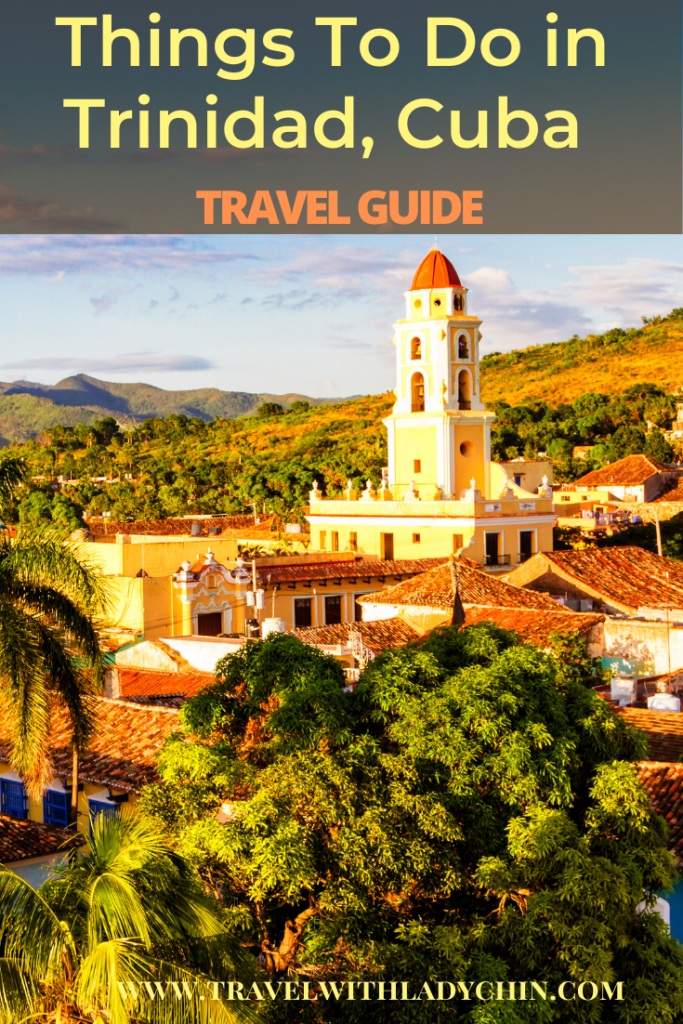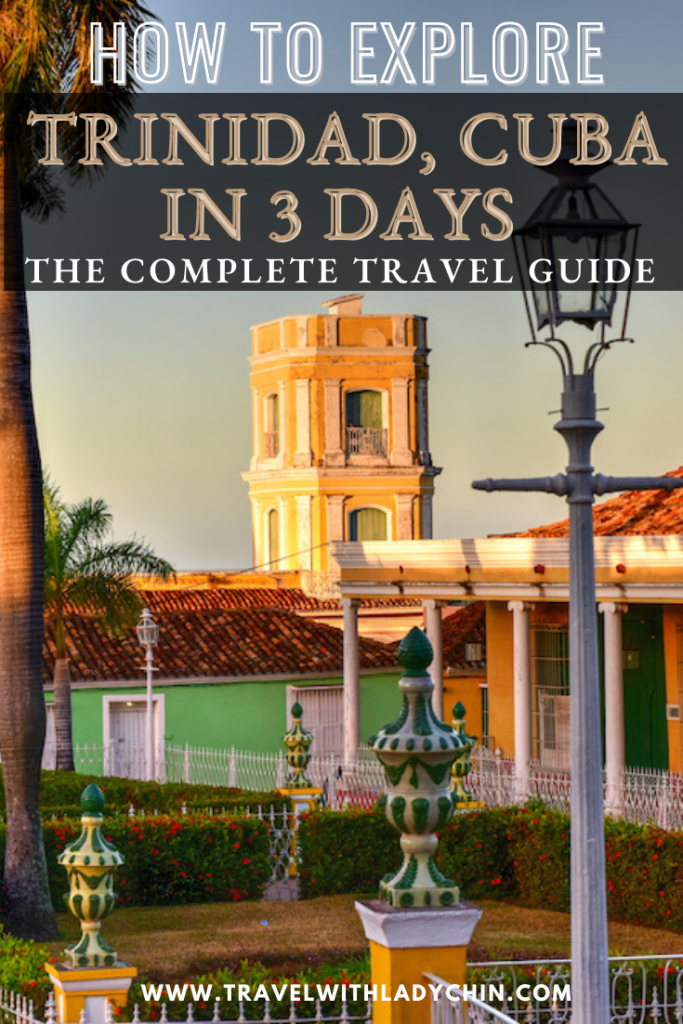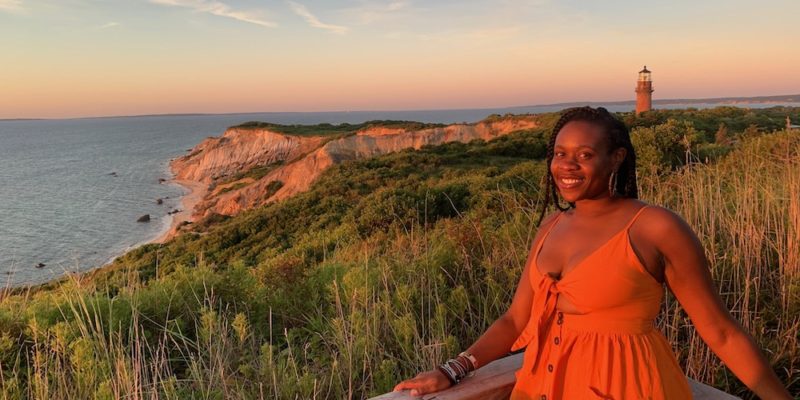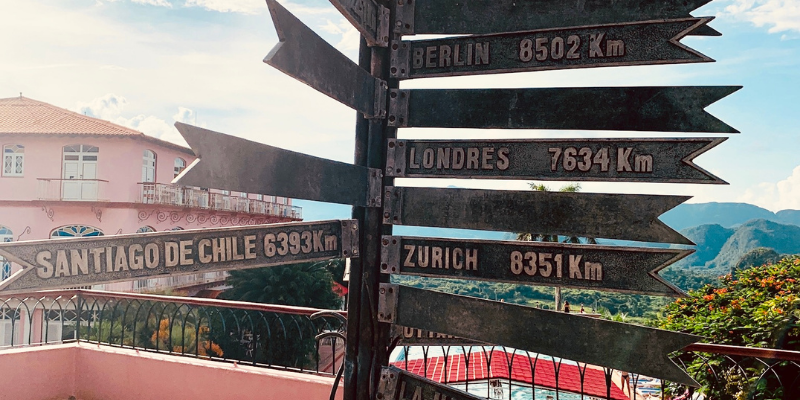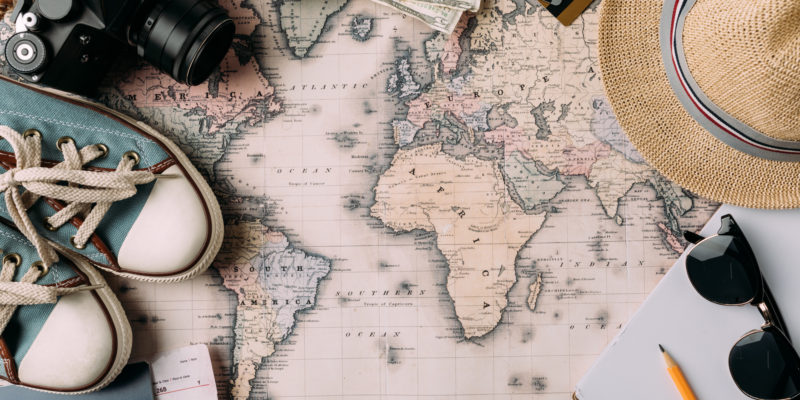Last Updated on September 20, 2023 by Lady Chin
Trinidad de Cuba, a Spanish colonial town located in central Cuba with rich history, is a destination that I overlooked. It wasn’t even on my radar. However, I’m here to tell you that you should add it to your Cuba bucket list
In this post, I’ve put together the complete Trinidad, Cuba travel guide to help you plan your trip. Read on to discover the magic of Trinidad.
Pin Me for Later!
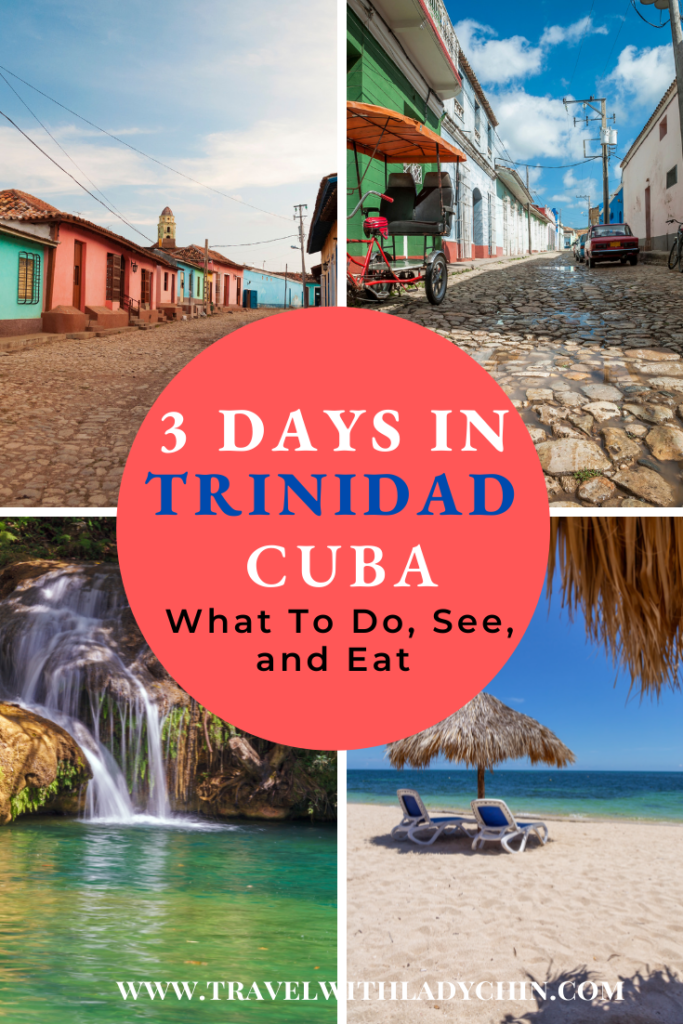
This is the ninth post in the Cuba series. Here’s the complete 10-part series:
Cuba Travel Series
Travel Guide: The Complete Travel Guide For First Time Visitors
Money Honey: Cuban Currency Guide: Everything You Need To Know
For The Culture: 36 Ways To Immerse Yourself in Afro-Cuban Culture
The Ultimate Cuba Bucket List: 101 Fun Things to Do in Cuba
Cuba Bucket List: Top 10 Epic Things To Do in Cuba
Packing Tips: The Complete Guide To Packing For Your Trip To Cuba
Inspiration: 30 Photos That Will Inspire You To Visit Cuba
Travel Tips: 10 Things You Should Know Before Visiting Cuba
Trinidad: How To Explore Trinidad in 3 Days
Viñales: How To Take the Perfect Day Trip From Havana To Viñales
Trinidad Travel Guide: Things To Do, See, and More
Where is Trinidad?
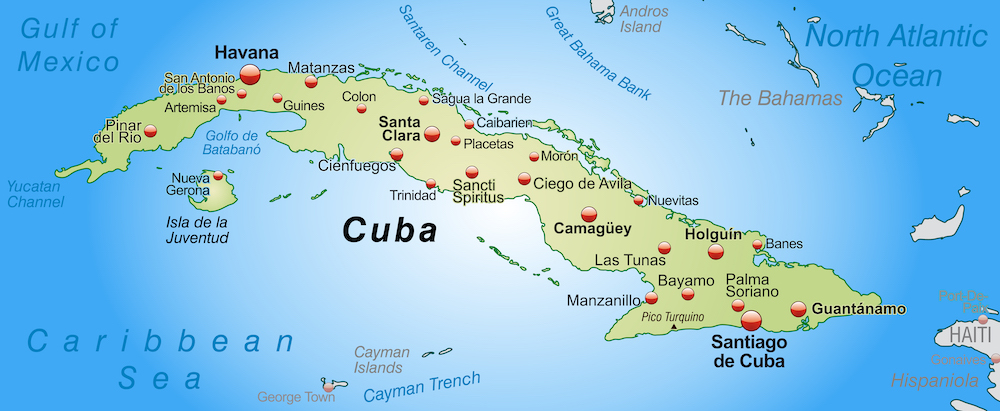
Trinidad, a UNESCO World Heritage site since 1988, is located in central Cuba in the Sancti Spíritus province. Trinidad is easily accessible to other places in Cuba.
- 4 hours/196 Miles from Havana
- 4 hours/165 Miles from Varadero
- 15 minutes/ 7 Miles from Playa Ancon
- 85 minutes/75 Miles from Cienfuegos
How do you get to Trinidad?
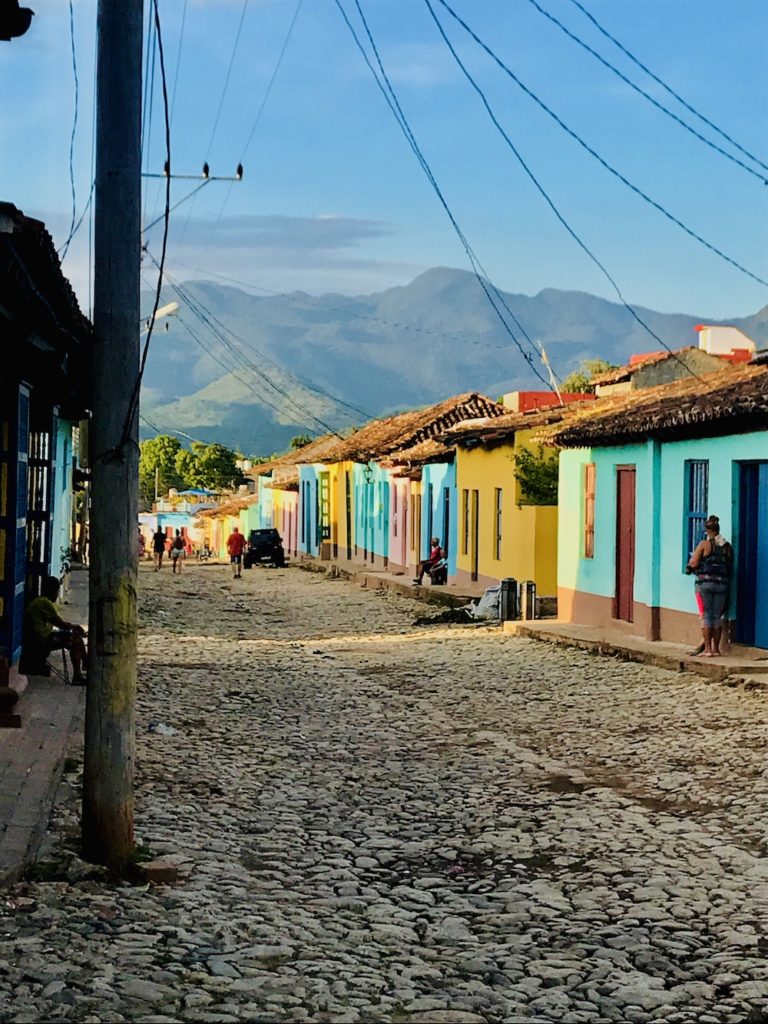
Traveling from the United States– José Martí international airport in Havana is the only airport U.S. flights can land. American Airlines, Delta Airlines, JetBlue Airlines, Southwest, and United Airlines are the most popular airlines that fly into Cuba. My preferred U.S. airline carrier is JetBlue. I just love their perks and their customer service is top-notch!
Once you’re in Cuba, here are several ways to get to Trinidad.
Bus – Buses travel daily to Trinidad from most cities on the island. If you’re traveling from Havana to Trinidad, you can catch your bus at the Viazul bus terminal located at the corner of Avenida 26 and Avenida Zoologico. You can purchase tickets in advance from Viazul, but prices at the stations may be lower.
For last-minute bus tickets, you can stop at the hotel Meliá Cohiba located in Vedado (a 10-minute drive from Old Havana), and ask the concierge or front desk about purchasing a Cubanacan bus ticket ($54 r/t).
Our host in Havana recommended buying bus tickets through the hotel especially seeing how we were within walking distance.
One downside to catching a bus from the hotel is the bus stopped at practically every hotel in Havana before hitting the road. I might as well give you a heads up about what to possibly expect!
Private Taxi – If you’re traveling with a group of people, consider taking a private taxi and splitting the cost. Prices may vary and remember always to negotiate but expect to pay between $100-$120 for a group of 4 people. If you can get the ride for cheaper then more power to you!
With this option, you have the flexibility to be on your own schedule and stop along the way to take photos and explore.
Car Rental– There’s nothing like the freedom of having your car to explore and see all there is to see in Cuba. Like taking a private taxi, you have the liberty of being on your schedule.
The average car rental is $85 per day, not including gas, insurance, and hire fees. However, once you add everything up, it can end up being quite expensive. You can pick up your rental cars at the José Martí international airport in Havana. Your home license will be sufficient enough for you to rent and drive in Cuba.
If you’re interested in renting a car, make sure to book your reservation weeks or even months in advance. Booking a rental ahead of time is highly recommended.
The blog, Why Not Cuba, goes into great detail about how to rent a car in Cuba, including the advantages and disadvantages of driving around the island.
Where is the bus station in Trinidad?
The bus pickup area for Viazul is on the corner of Calle Gloria and Boca Calle. Be sure to arrive at least 15 minutes before departure and purchase your ticket in advance.
Where does the bus drop you off in Trinidad?
Buses drop passengers off at the Plaza Carillo. Plaza Carillo is about five blocks away from Plaza Mayor.
Wifi is available in Plaza Carillo if you have an internet card.
Where can you buy bus tickets in Trinidad?
Bus tickets are available for purchase online at Viazul or in advance at the local ticket office located at the corner of Calle Gutierrez and Calle Rosario.
Top things to see and do in Trinidad
Use this map below to help you find the locations of the best things to do in and see in Trinidad!
Trinidad has pristine cobblestone streets, inviting sherbert-colored buildings, rows of Spanish colonial architecture, and sugar plantations. It’s the perfect place to explore Cuba’s colonial history. At night the charming town comes alive with the sounds of salsa music that can be heard coming from La Casa de Musica (The house of music).
I suggest staying for 3-5 nights if your travel plans allow. I went to Trinidad for three nights and could’ve easily spent a few more nights. Here are my top things to do in Trinidad.
Stroll through Plaza Mayor – Plaza Mayor was built back when the region was wealthy from the sugarcane industry. The plaza is surrounded by exquisite raised gardens, fancy cast-iron benches, cobblestone streets, and historical buildings from the 18th and 19th centuries.
Plaza Mayor is great for people watching, but be warned that this area is the main tourist attraction, so be prepared for vendors wanting to sell you things.
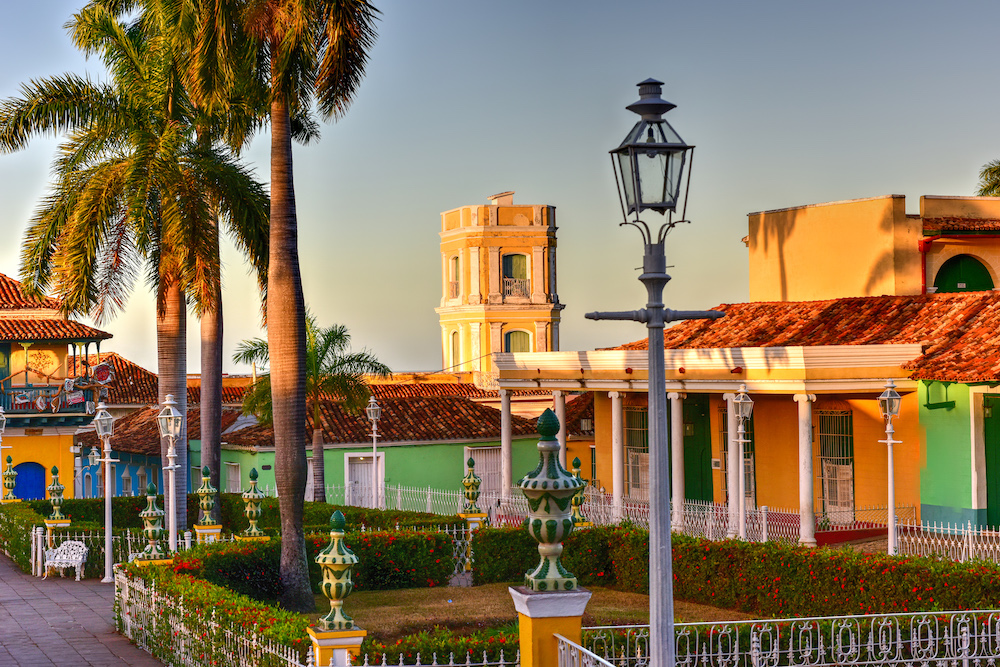
Wander down the cobblestoned streets – It’s nearly impossible to get lost in Trinidad, given its size. Spend a few hours wandering around the charming city. As you get away from the city center, you’re welcomed by a striking backdrop of mountains and houses painted the color of sorbet. A highlight for me wandering the streets was making friends and catching a game of domino.
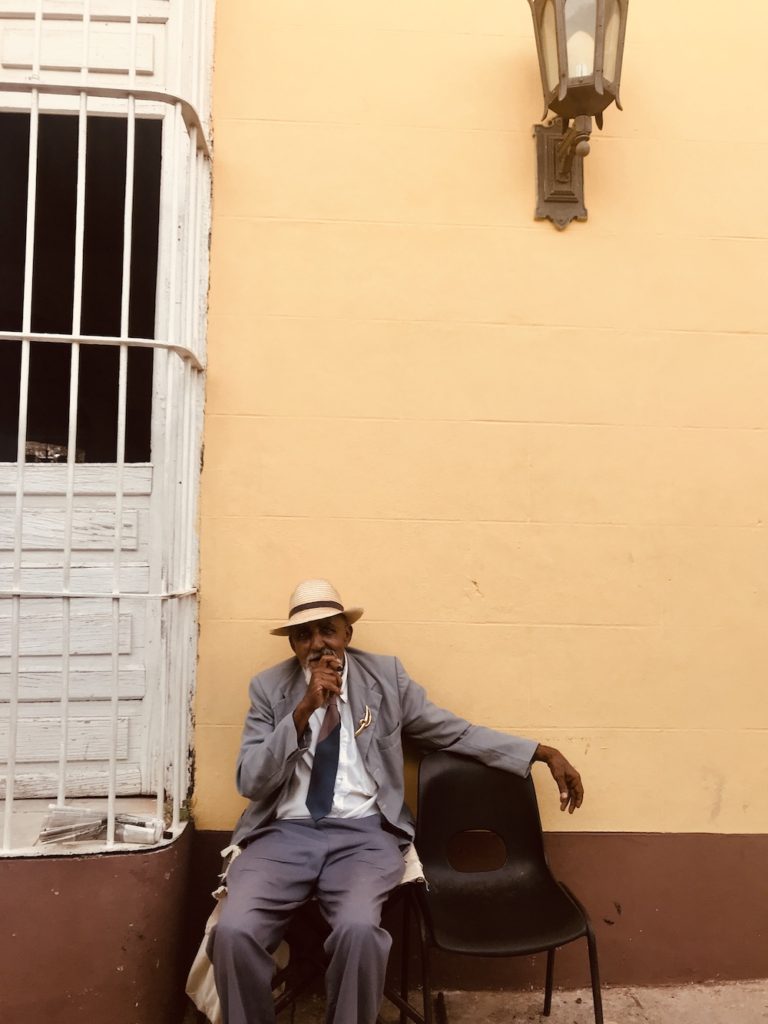
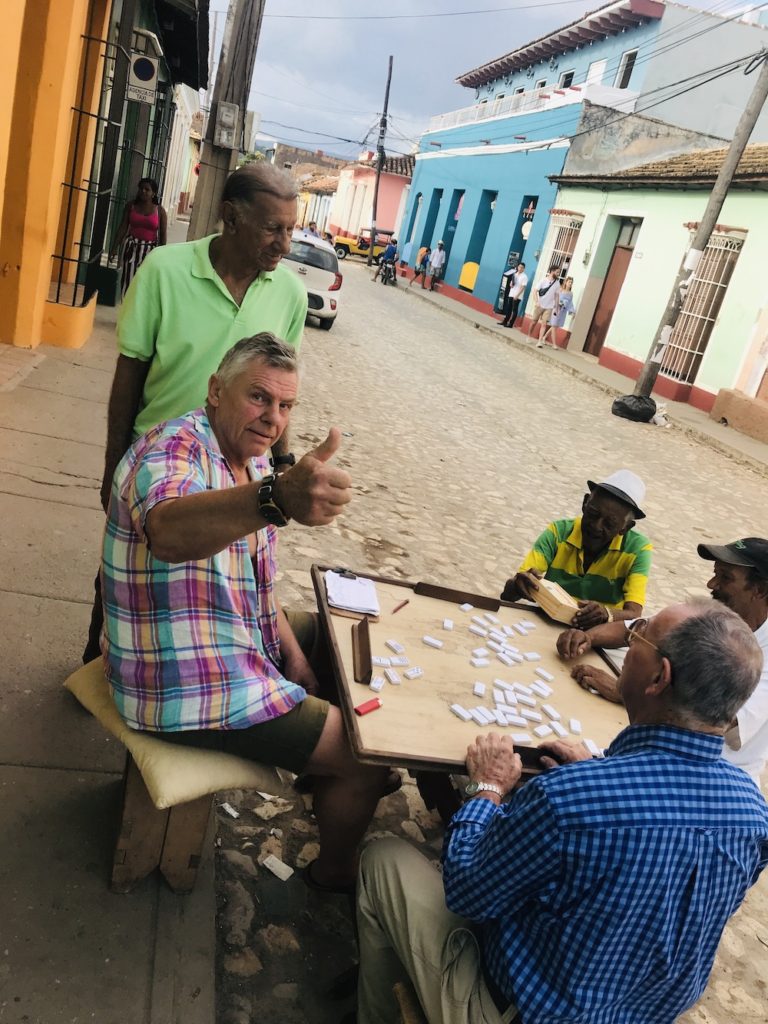
Take a day trip to Valle de Los Ingenios (Sugar Mills) – to learn about the history of sugar cane production in Cuba. Valle de Los Ingenios is a series of three interconnected valleys about 7.5 miles outside Trinidad. During the 18th and 19th centuries, this region had over 30,000 enslaved Africans working in the sugar mills/fields allowing the Spanish to dominate the sugar industry.
Don’t miss Manaca Iznaga, one of the only intact plantations in the area where the owner’s house, a tower, and original enslaved quarters remain. Pay a small fee to climb dozens of stairs of the 149-feet tall Manaca Iznaga Tower, leading to the observation deck with stunning views of Valle de Los Ingenios. The tower served as a lookout for watching the enslaved Africans.
A fun way to get there is by taking the steam train from Trinidad. This railroad route dated back to the late 1800s and was created to transport sugar to the port town of Casilda.
Tip: Don’t forget to wear comfortable walking shoes.
Head to Playa Ancón (Ancón Beach) – If you’re a beach lover like myself and looking to chill out, then I highly recommend you set a day or afternoon aside for the beach! Ancón beach is fantastic! The water is crystal blue, and the sand goes for miles!
The beach is conveniently located just 15-minutes from Trinidad. You can rent bikes and make a 30-minute trip each way, or you can take a taxi. If you’re staying in a casa particular, ask your host about the best way to get to the beach.
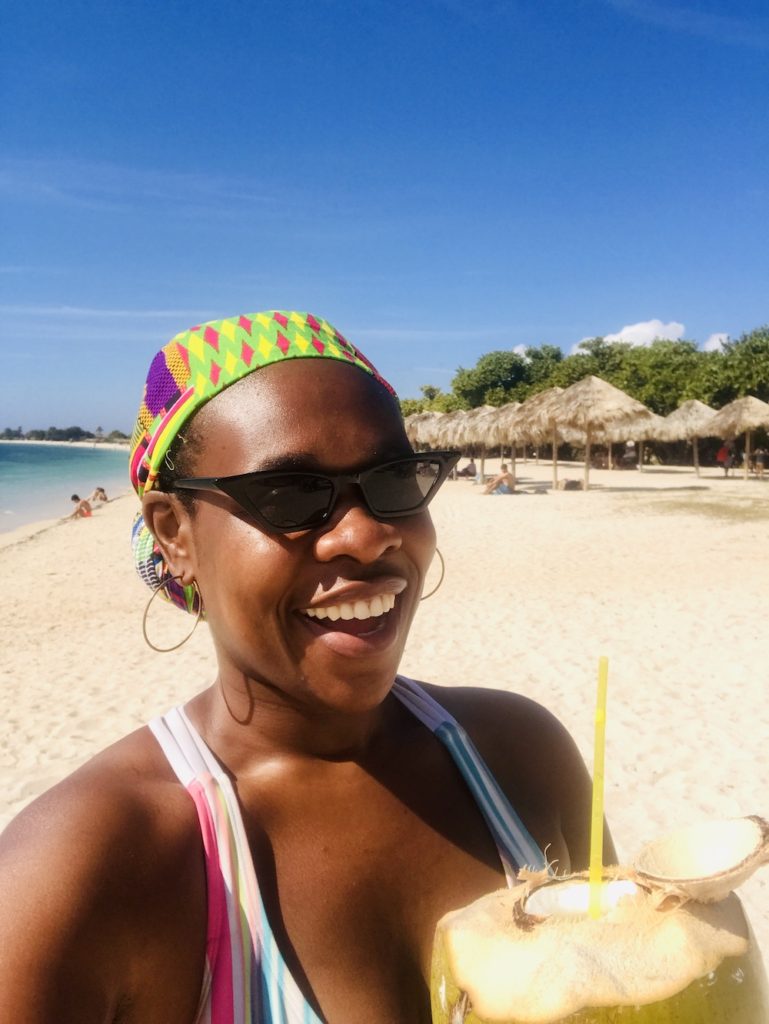
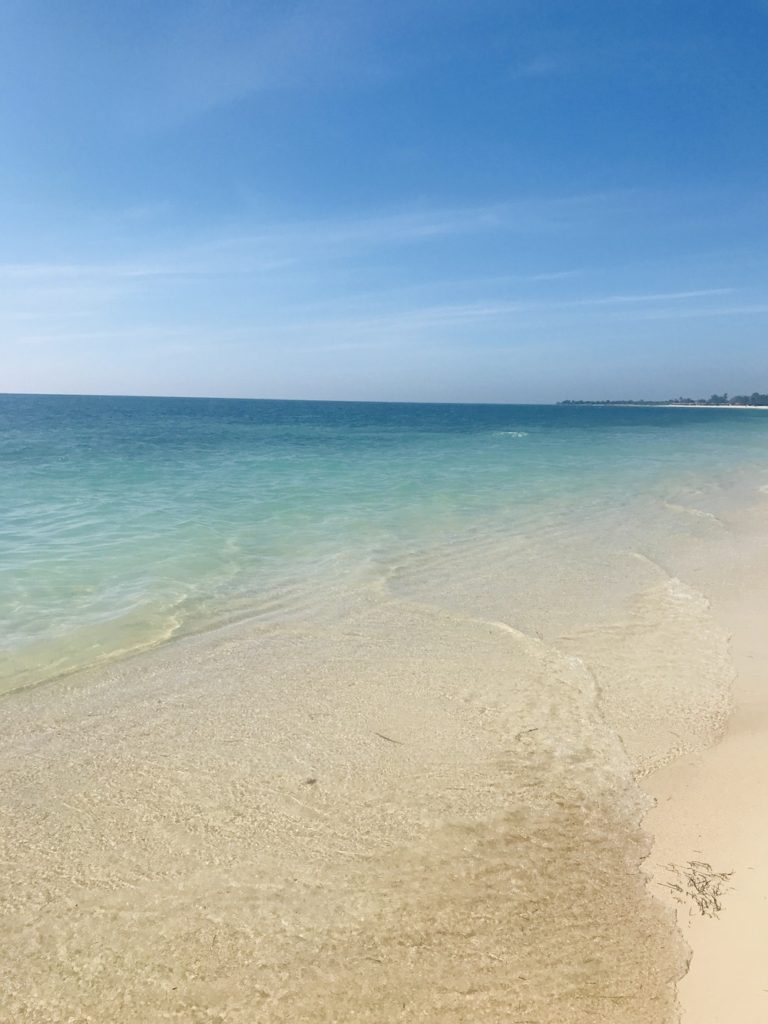
Spend the day at Topes Collantes & Salto del Caburní– If you’re looking to spend a day in nature, hiking in Topes Collantes is your best bet! Topes de Collantes Natural Reserve stretches across the Escambray mountains in southern Cuba. While you can hike the trails independently, you can ask your driver to go on the hike with you as I did.
The thought of walking for an hour through unfamiliar woods wasn’t an option for me. I felt much better hiking with someone familiar with the area. After an hour’s hike, we were greeted by a lovely waterfall, Salto del Caburní. I went for a much-needed and well-deserved swim.
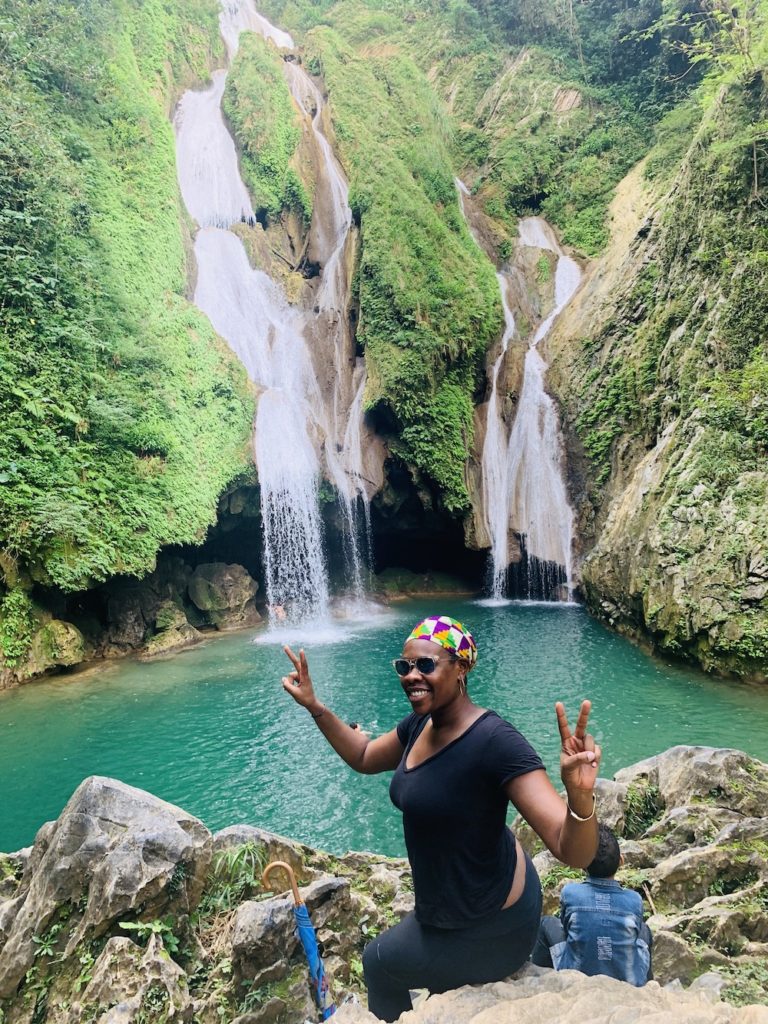
After your swim and hike back to the top, stop at the Casa Museo Del Café or the Museum of Coffee for a delicious cup of coffee. I had my coffee with rum!
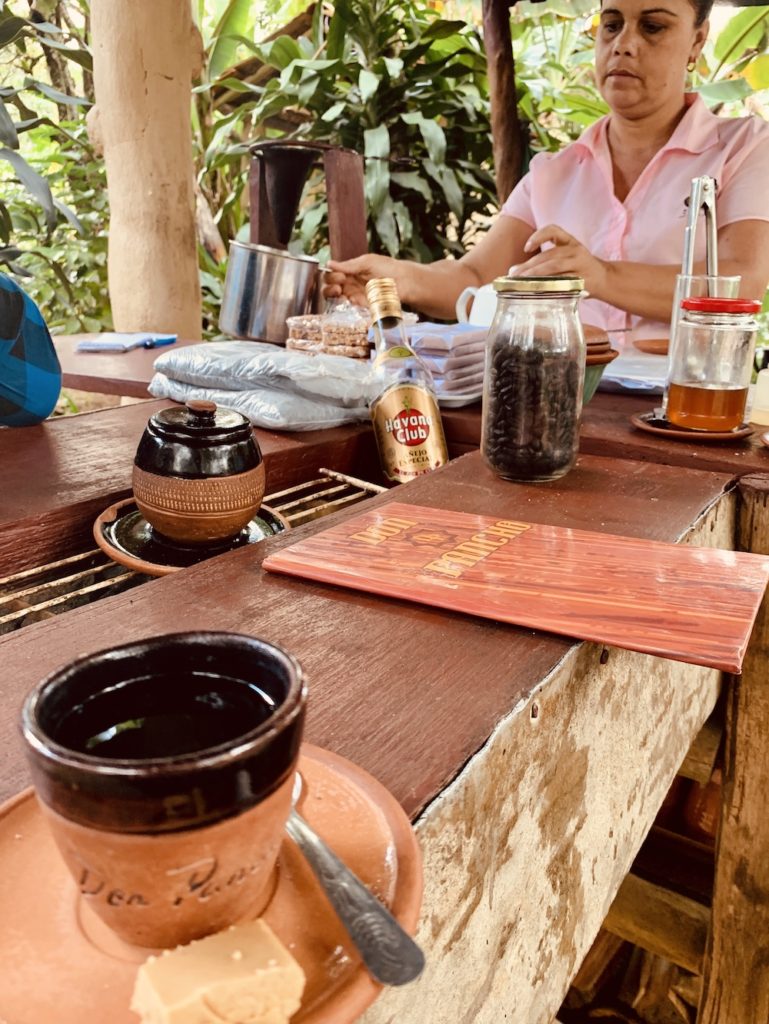
Tip: Make sure to bring the following: comfortable shoes, bathing suit, towel, and change of dry clothes. The terrain can be uneven, and sandals won’t cut it. The hike is about 2 hours round trip, so plan accordingly.
Visit Convento de San Francisco de Asis (Trinidad Bell Tower) – Visit Convento de San Francisco de Asis before heading out for a day trip. This picturesque yellow bell tower is in Plaza Mayor. If you’re feeling adventurous for a small fee, you can climb the 120 steps to the top of the bell tower for an exceptional panoramic view of Trinidad that goes all the way out to the beach!
Inside the museum are photographs of Cuban history. The descriptions underneath the photos are in Spanish, so make sure to bring a translator with you.
Stop in at Casa Temple de Santeria Yemayá, The Yemayá Temple – This 18th-century house is a Santería temple dedicated to the deity of the sea. Yemayá, the goddess of the sea, is dressed in white and decorated with fish representing her sons’ eyes. The religious temple and house symbolize the historical and cultural importance of the Afro-Cuban culture and local identity.
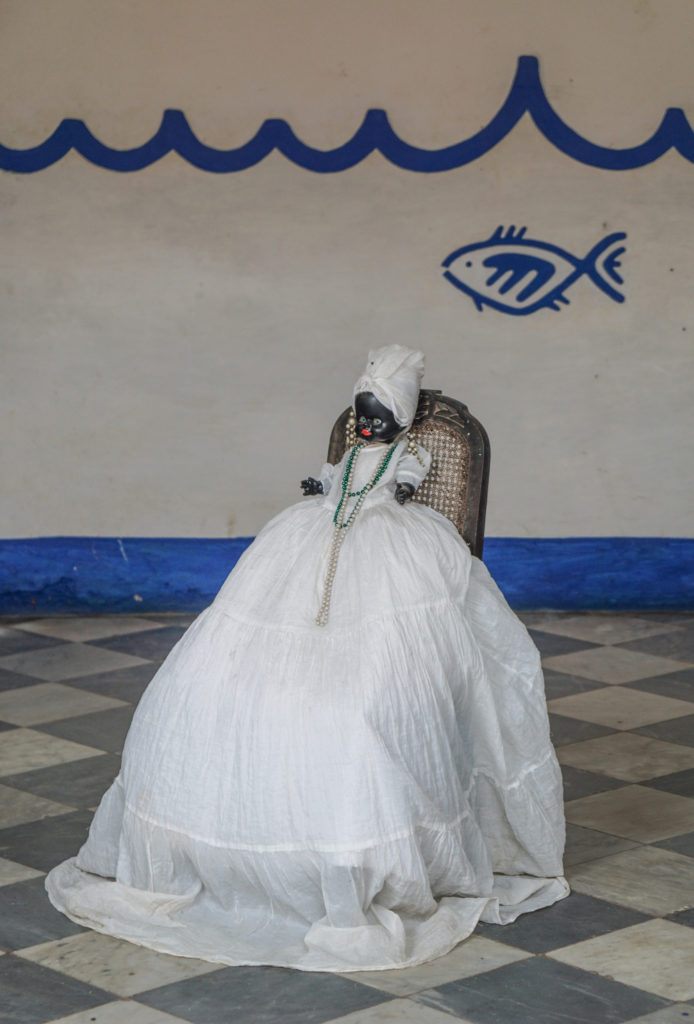
Visit the Open-Air Market – Located in front of Casa de la Trova, La Candonga craft market, open daily is one of the most popular tourist markets. Here you can purchase one-of-a-kind handcrafted souvenirs such as textiles and crochet pieces. The souvenirs are unique to Trinidad, making them difficult to find in other parts of the island.
I don’t recommend buying black coral or turtle-shell items. Airport officials will confiscate them as they are forbidden.
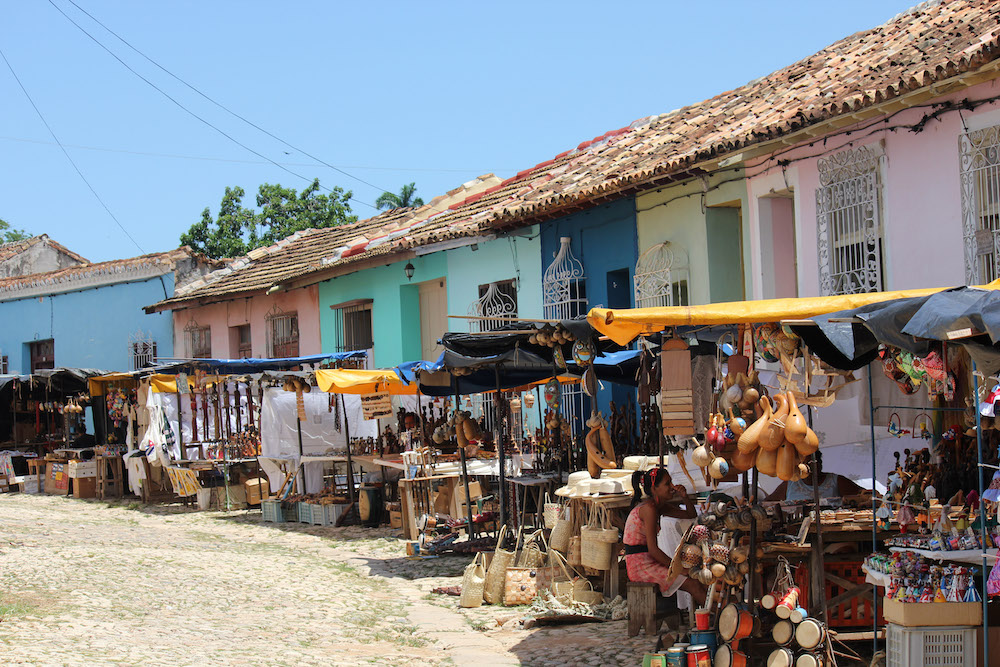
Visit the museums
Trinidad has no shortage of excellent museums. Here are a few notable ones worth checking out:
- Palacio Brunet, Brunet Palace – Also known as the Romantic Museum, is the most visited architectural gem in Cuba with the most exquisite Andalusian-style courtyard. Formerly owned by a wealthy Creole family, this 14 room palace turned museum is filled with decorative artwork, silverware, old furniture, and more.
- Palacio Cantero, Cantero Palace – This Neoclassic style four-room museum, also known as the Trinidad Municipal Museum, is great for learning about the history of Trinidad. The rooms showcase the local history, weapons, armors, canyons used to protect from the pirates, the transatlantic slave trade, and the sugar industry. My favorite feature of this museum is the bell tower that offers the city’s most spectacular views. You can’t miss it!
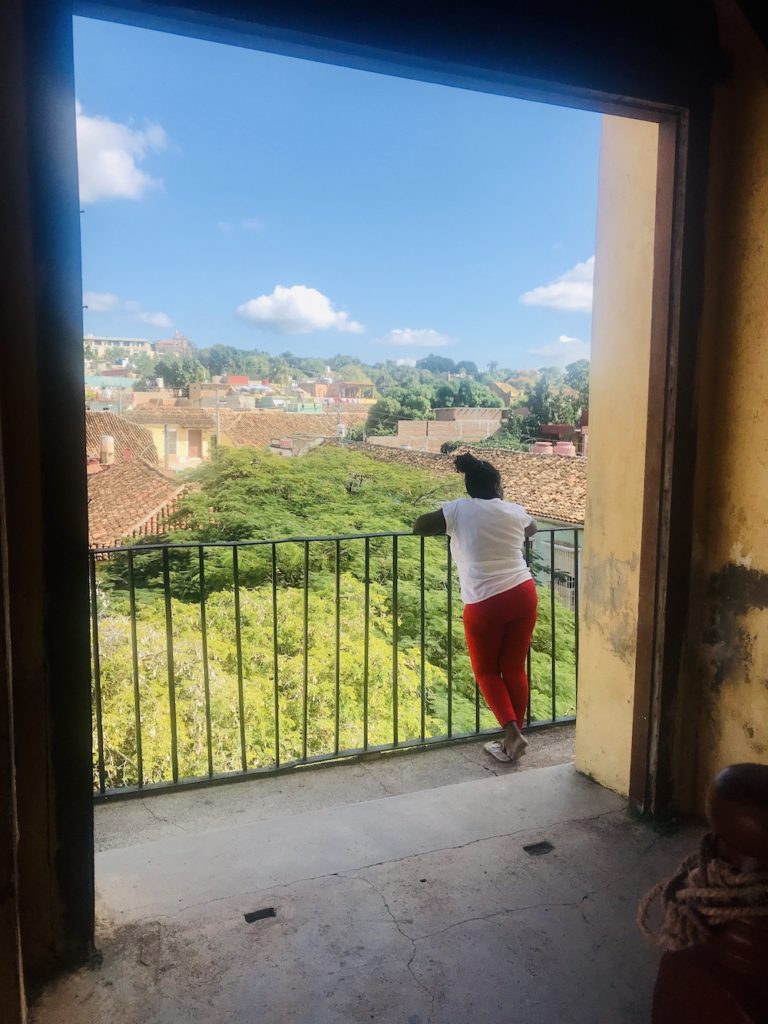
- Museo de Arquitectura, Museum of Architecture -This unique architectural museum comprises of two buildings joined together, known as La Casa Azul (The Blue House). The museum consists of 8 rooms dedicated to local architecture and works of artists. Specialized guided walking tours are available to learn about the history of the houses and of Plaza Mayor.
Nightlife in Trinidad
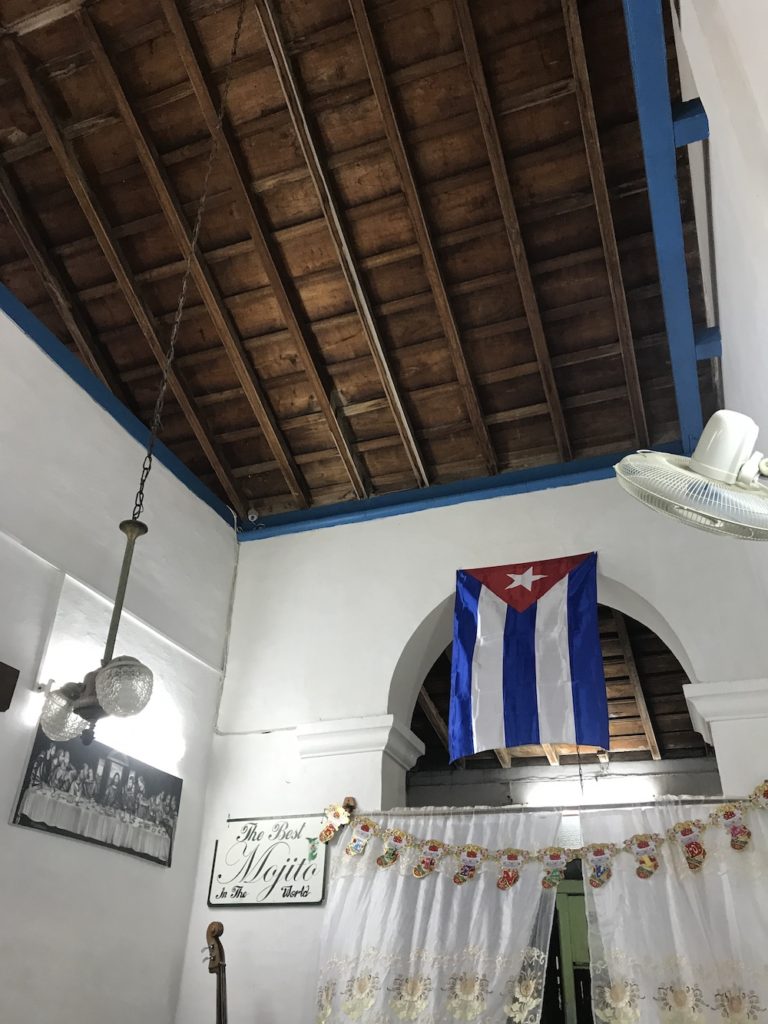
Stop in Palenque de los Congos – My casa particular host recommended visiting Palenque de Los Congos, and I’m glad we did! This traditional venue has some of Trinidad’s best Afro Cuban drumming and live music. Folklore Afro-Cuban dance performances are hosted regularly. We only meant to stop in for a bit and ended up enjoying the chill not-so-touristy bar. Best of all, regulars aren’t shy and will teach you how to salsa!
Don’t miss La Casa de la Música de Trinidad – I can’t think of a better night than dancing to live salsa and rumba music under the stars. Casa de la Música is conveniently located in Plaza Mayor. At night, this outdoor venue comes alive with vibrant music and locals and tourists alike. After 11:00 pm, the venue turns into a nightclub. $2USD to get in.
Dance the night away at Disco Ayala – Disco Ayala, also known as La Cueva (“The Cave”), is a dance club you can’t miss! The cave is 100 feet under earth and is no place like it! Popular on the weekends, it’s an ideal spot to see Cubans and tourists mingling, dancing the night away, and one of my favorite experiences in Trinidad.
The entrance fee of $5 includes a complimentary drink. The music is energizing, and the lights add to the naturally formatted stalactites. Rumor has it every night before the club opens at 10 pm, the staff has to smoke the bats out of the cave. I didn’t see any bats myself, but hey, don’t say I didn’t warn you.
Tip: Disco Ayala is a dark 10-minute walk uphill from the center of town. So make sure to bring your phone or a small flashlight.
Visit La Bodeguita del Medio – Stop in this famous Cuban bar near Plaza Mayor for a mojito and listen to live bands play the music that makes your body move. Check out the walls covered with names and messages written from people who have visited the location over the years.
Try a Canchánchara – A night out in Trinidad isn’t complete without trying a canchánchara. Canchánchara is the original Cuban cocktail, famous in Trinidad and practically unknown off the island. This refreshing yet potent cocktail is made with honey, rum, lime, and water.
For an authentic cocktail with flavors that will dance along with your taste buds, head over to Taberna la Canchánchara or Plaza Mayor for the tastiest and most refreshing cocktail you’ll have!
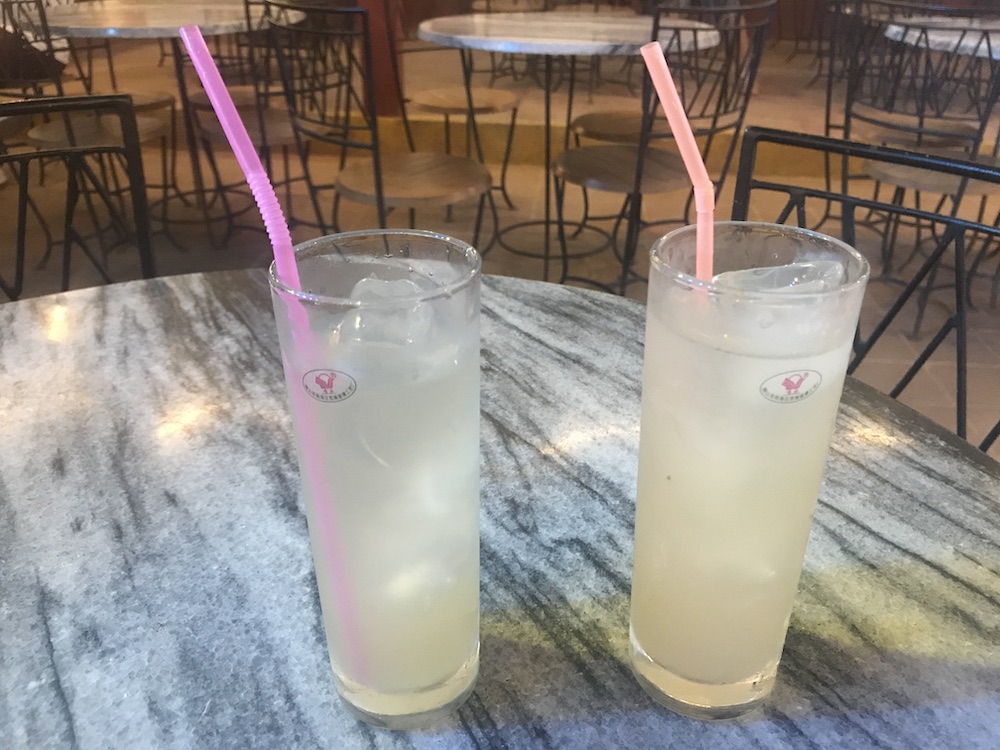
Money Saving Tips
- Take the bus
- Carpool with a few people
- Enjoy home-cooked meals at your casa particular
Where to stay in Trinidad
Casa particulares, private homes, are the most common accommodations in Cuba. I highly recommend staying at a casa, particular for part of your trip. Most casas offer the privacy of your own room, private bath, air conditioner, hot water, and my personal favorite, home-cooked meals! Home-cooked meals typically cost between $4-10 per person.
If you decide not to book a place in advance before heading to Trinidad, not to worry, there will be plenty of Cubans waiting at the bus station with pictures of rooms/amenities available in their homes.
You can also walk around and check out a few places before settling on a location. If you’re staying in the city center, casa particulars should be about $25-30/night.
I opted to book our place beforehand; we stayed at this cute casa particular, for $21 a night and loved it! We had the entire back of the house to ourselves, including a lovely terrace with incredible city views.
Our hosts, Rey and Laura were amiable, hospitable, and knowledgeable. Oh, did I mention the food was delicious! Having a meal at your casa is a great way to have an authentic and affordable meal.
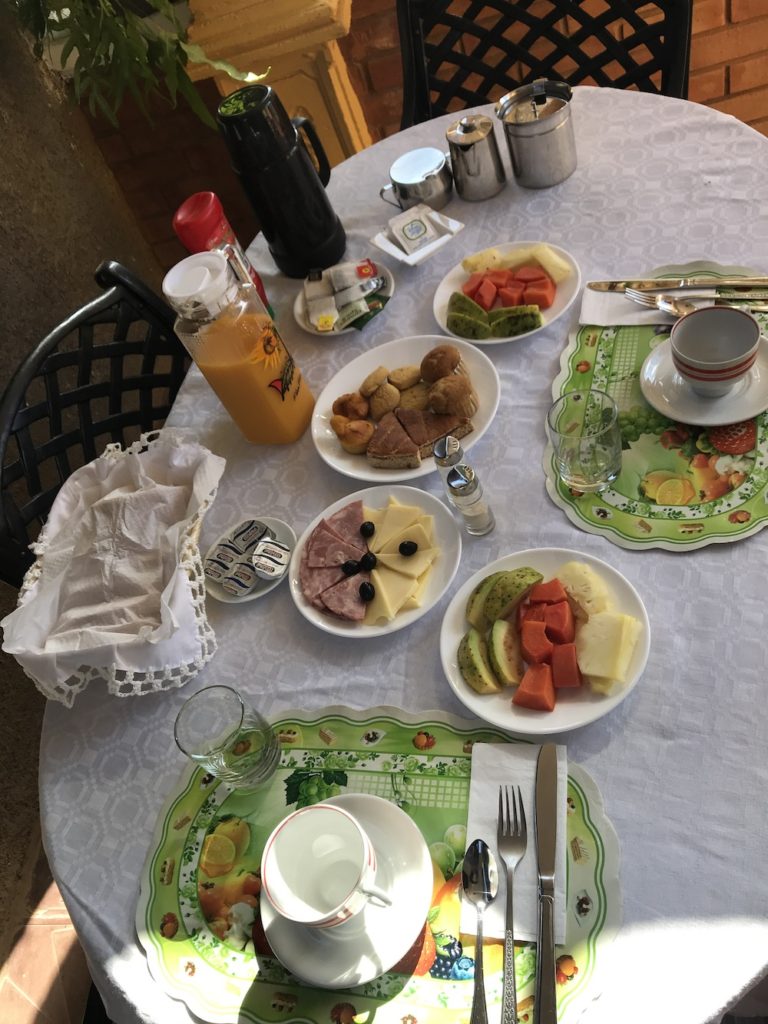
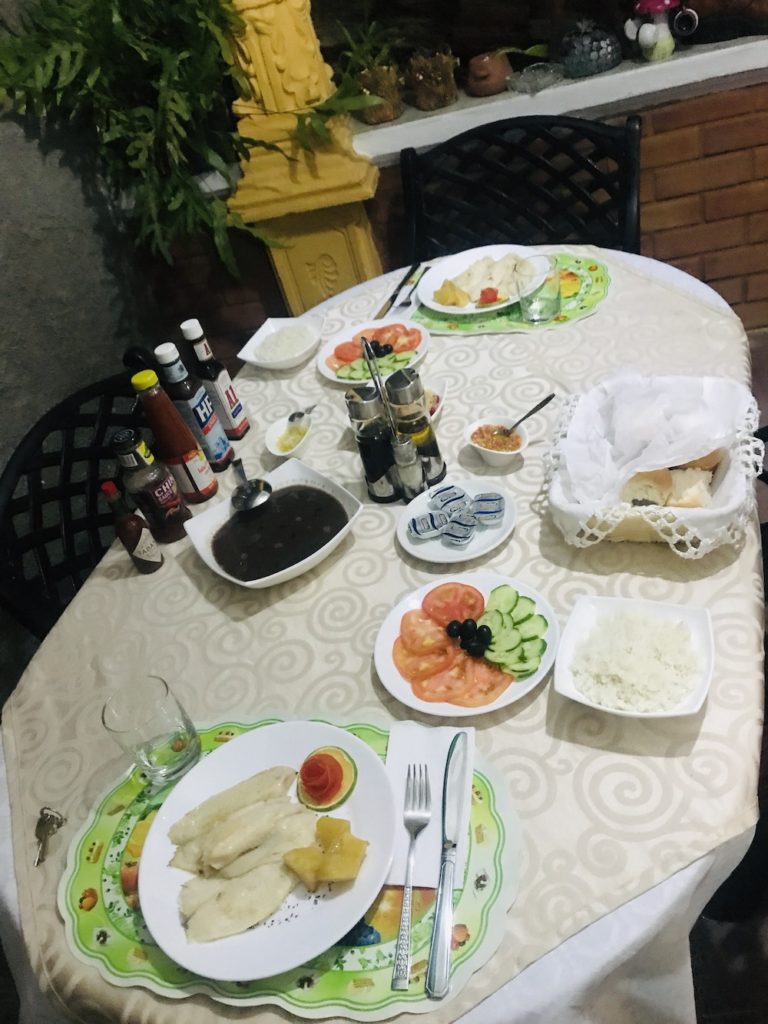
Hotels in Trinidad
While I highly recommend staying in a casa particular for a more authentic experience, here are a few hotels in Trinidad to consider.
Budget – For budget travelers, Casa Colonial el Patio and Hostal Marley Y Miguel (approx $30-$35/night) offer affordable accommodations in a shared bedroom with airconditioners, shared kitchen, bathroom, patio, and in-house restaurant and bar.
Mid-range – Hostal El Shadday (approx $65-$70/night) is a good choice for travelers looking for something that won’t break the bank. Double and triple bedrooms are available with private bathrooms, air conditioners, small kitchens, access to a lovely terrace, and a shared lounge area.
High-end – For a more luxurious stay, Iberostar Grand Hotel (approx. $300/night) and Ana Hostal Shalom (approx $280/night) are considered the best hotels in Trinidad, according to Trip Advisor. Both hotels are adults only, and I recommend booking in advance.
Ana Hostal Shalom is an entire villa that groups of travelers can rent. Amenities include a terrace with great views of the surrounding mountains, cozy rooms with AC, refrigerators, and WiFi.
Amenities at Iberostar Grand Hotel Trinidad include spacious guest rooms, a conference center, an in-house restaurant and bar, and delicious breakfast options.
Wifi in Trinidad
Wifi in Cuba can be a pain to find at times; in Trinidad, you can find several wifi hotspots in public areas like Plaza Mayor. You’ll know you’re in the right place because you’ll see other people sitting on the steps of La Casa de Musica glued to their phones. Some restaurants in the plaza have wifi, so you can enjoy a drink/meal while checking your email.
You can buy wifi cards throughout the town, but the most affordable prices are at the ETECSA booths or the tourist info center. Wifi cards are $2 an hour. You can also purchase internet cards from local hotels, but they will charge as much as $6 per hour.
Check out the three public wifi locations in Trinidad listed below:
- Parque Céspedes de Trinidad
- Casa de la Música
- Clínica Internacional de Trinidad
Getting around Trinidad
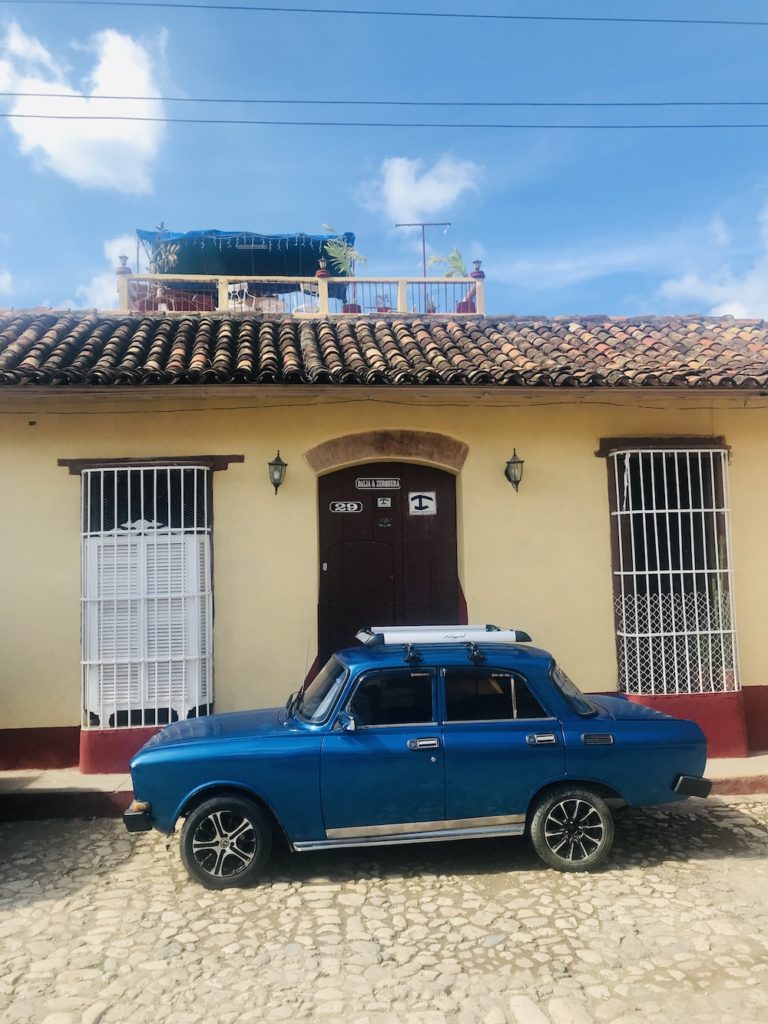
If you’re staying in the city center, the easiest way to get around and explore is on foot. The cobblestone streets are pretty narrow, which doesn’t allow for cars to move around with ease.
By Taxi – There is no shortage of taxis. You can find a taxi in the city center or ask your host to arrange a pickup. Our host was gracious enough to arrange a taxi to bring us to Playa Ancón, which was a huge help!
Little yellow coco taxis are also available, and I recommend taking them at least once during your stay. The taxi is a non-air-conditioned three-wheel vehicle that is convenient for getting around. Trips usually cost between $4-6, depending on where you are going.
Tip: If you can, try and negotiate the price of the taxi beforehand. You shouldn’t pay more than $8 to Playa Ancón and $15 to take you to Manaca Iznaga.
By Bicycle – For the adventurous types, renting bikes is a great way to explore the area. A lot of visitors rent bikes and venture out to Playa Ancón for the day. However, keep in mind that the beach ride is mostly downhill on your way to the beach.
However, when coming back, the trip is entirely uphill. Ask your casa particular host about rentals as they may have bikes of their own for rent or know someone who does! Rentals cost $2-4 per day.
By Bus – The Trinidad Bus Tour offers transfers to Playa La Boca and hotels on Playa Ancón. The tour starts at the Transtur office on Lino Pérez between Maceo and Francisco Cadahía.
Departure times are: 9 am, 11 am, 2 pm, 4 pm, and 7 pm, and picks up at a few stops in town, including the Cubatur office. Buses return from the beach at 10:15am, 12:15pm, 3:15pm, 5:15pm, and 8:15pm. The fare is $2 per person.
Things to know before you visit
Best time to visit Trinidad
There isn’t a wrong time to visit Trinidad, Cuba, but the three seasons are dry, wet, and hot. Every season offers its uniqueness to the region.
Weather in Trinidad
Dry Season (November – April) – The dry season is the best time to visit as the average temperature is 24°C (75°F). Keep in mind this is also high season in Cuba, which means a lot of visitors. I suggest booking your accommodations in advance. I spent New Year in Trinidad and was surprised by the number of tourists.
Hot Season (May – July) – The hot season is no joke, but on the flip side, it can be an excellent time to visit, especially if you want to avoid the high season crowds. Visiting during the hot season also means you don’t have to compete with other visitors and have the luxury to book accommodations and transportation last minute. The hot, humid temperatures can be overwhelming if you’re not used to the heat. The average temperature is 31-33°C (89-91°F).
August – October (Wet Season) – During the wet season, you can expect spells of heavy rains, humid temperatures, and a higher risk of hurricanes or tropical storms. I visited Cuba during the wet season, and while it rained a bit every day, it wasn’t enough to keep me inside. A bonus for visiting during the wet season is the lush green landscapes and tobacco fields. The rain also means overflowing waterfalls and rivers, so keep that in mind if you’re venturing out to Salto del Caburni inside Topes de Collantes.
How to stay safe in Trinidad?
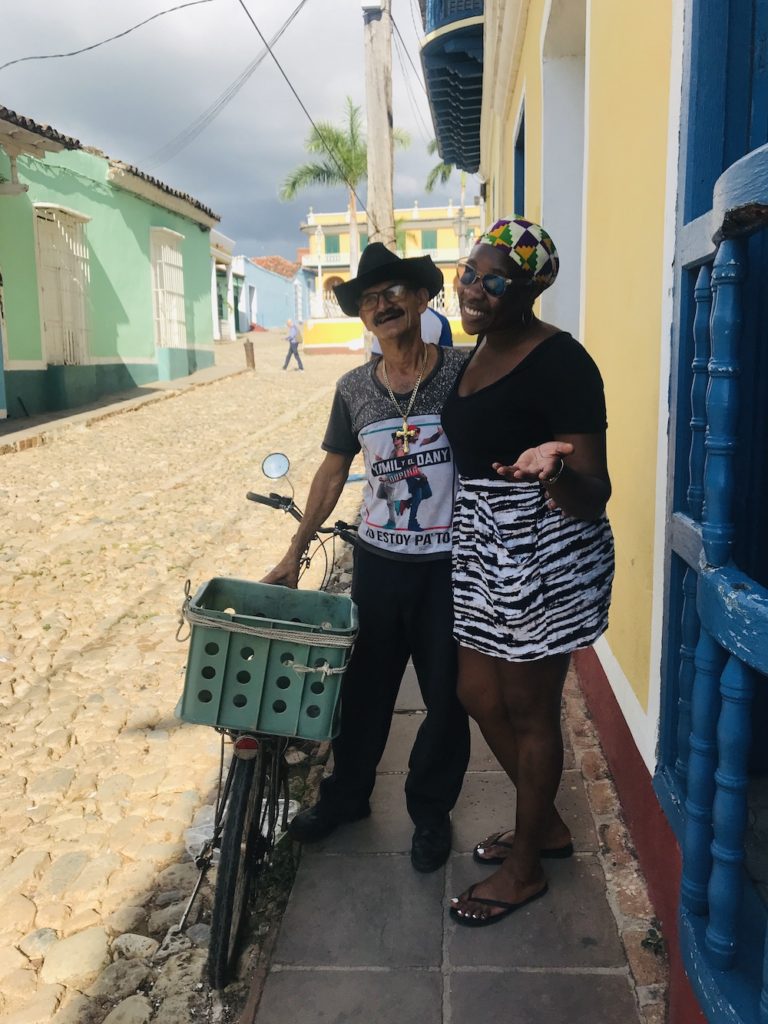
Overall, Cuba is very safe for travelers, and Trinidad was no exception. We had no issues roaming the streets during the day or night. We had a few late nights and felt completely safe walking back to our casa particular.
Petty theft in Trinidad is growing. However, like any city with lots of tourists, anything can happen. The most common crimes include bag snatching, pickpockets, and money exchange, especially at bars and clubs.
With that said, I recommend staying alert of your surroundings, never strolling around with your phone out (it won’t work anyway!), and keeping your purse and belongings with you at all times. Make copies of your documents, including your passport and ID.
Always go with your gut instinct. If you wouldn’t do it at home, then don’t consider it while abroad.
Favorite travel resources
Check out some of my favorite resources I use when I travel to Cuba.
Book Your Flight – My go-to flight search engines are Skyscanner, Google Flights, and skiplag. I love these three sites because they search smaller websites to find the cheapest and best flight deals.
Hopper – I can’t express how much I love and use Hopper! I used Hopper to help me determine the best time to purchase my tickets to Cuba, along with other places. You can download the app from the Apple store to your phone, plug in the dates you are looking to travel, and you will receive a notification letting you know the best time to purchase plane tickets.
Accommodations – Airbnb is my first choice when it comes to booking accommodations. It’s an excellent alternative to staying at a hotel.
Booking.com – This website is incredible for finding affordable accommodations. I like this website because they have a no money down policy, unique selections ranging from high-end luxurious penthouses to bungalows, and the best rates you will find online.
Conclusion – Lady Chin’s Two Cents
As I stated before, Trinidad wasn’t originally on my bucket list and decided last minute to spend New Year’s here instead of Havana. I am happy I did! Trinidad is the perfect city to escape the bustling city life and be one with nature, history and meet lots of interesting people.
I was surprised to see the number of tourists, but I could see why the city attracts people far and wide after spending three days there.
During my next visit, I plan to stay for at least five days to venture out to Cayo beach and visit the neighboring tobacco farms.
Make sure to bring lots of cash just in case, as American debit cards and credit cards won’t work!
Trinidad has something for everyone, and a year later, I still rave about the remarkable city!
Have you been to Trinidad, Cuba? What was your favorite thing to do there?
Like this post? Pin it and save it for later!
